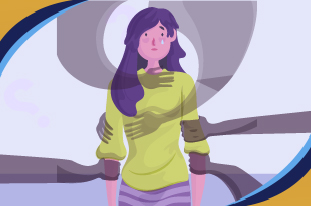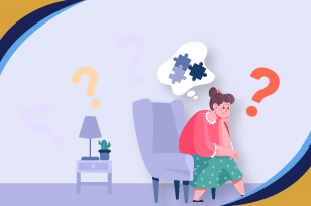In the broad world of human existence, there is a woven thread of individual experiences with collective consciousness. This is the philosophical understanding of the human psyche. It determines personality and resonates with one person to another. People recognize it. However, they carry the distinguished characteristics. To categorize them, Carl Jung gifted us with a map on psychological grounds. Within this map, we set intricate patterns of our deepest motivations, fears, and desires, the archetype that is the foundation of our personalities.
As therapists, we go deep down into Jungian archetypes that offer us a lens through which we can better understand, empathize with, and direct people for self-discovery and healing.
Deep Understanding Of What Personality Archetypes Are
Have you ever thought about why certain stories resonate with you? Why are you drawn to certain types of people or challenges?
The answer is something called “personality archetypes”. These are not just trendy labels; they are powerful, old patterns that influence how we think, feel, and behave. You can consider them as a building block of our shared human experience, passed down through generations.
The idea of archetype was first introduced by Carl Jung, a Swiss psychiatrist. Jung believed that beyond our individual memories and experiences, there is a deeper shared part of our minds, which he called the “collective unconscious. This collective unconsciousness is like a vast library of universal patterns and images, the archetypes.
They are not something we learn, but some hidden inclinations that shape our thoughts, perceptions, and interactions with the world. You can see them pop up everywhere, in myths, fairy tales, dreams, and even in our everyday lives.
Read More: Understanding The Different Types Of Trauma

12 Common Archetypal Figures
These 12 archetype personality figures offer a human experience and motivation:
The innocent
This archetype looks for paradise, happiness, and simplicity. They see the good in everything and everyone and value purity and optimism. Think of characters who maintain a childlike wonder and faith, even in difficult situations.
The Everyman/Everywoman
They seek to connect with others and feel a sense of belonging. They value authenticity and are often relatable because they represent the common person with everyday struggles and joys. They are the friendly neighbor and dependable colleague.
The Hero
The hero character is often called upon to overcome challenges driven by a desire for mastery and competence. They are courageous and determined, and always strive for victory and make a difference. They are the same from ancient warriors to modern-day activists.
The Caregiver
This archetype is about giving care and protection to others. They are compassionate, supportive, and focused on providing comfort and help. You can think of them as loving parents, a dedicated nurse, and a selfless humanitarian.
The Explorer
They are like adventurers who love freedom and discovery. He is also like who loves to push boundaries and venture into the unknown. They find new experiences, personal growth, and a deeper understanding of the world. This can be a traveler.
The Rebel
The rebel, as the name suggests, challenges the status quo and seeks to transform the world. They are often seen as rule-breakers, but their motivation is to bring about positive changes and overturn oppressive systems. They champion freedom and revolution.
Read More: Is Panic Disorder a Disability?
The Lover
This archetype pursues closeness, connection, and deep relationships. They value passion, beauty, and emotional closeness. The lover can manifest in romantic relationships, but they are also in a deep love for art, nature, or a cause.
The Creator
The creator is driven by a desire to innovate and bring new things into existence. This often involves artistic expression, but it can also be about problem-solving, building, or designing. These types of people are imaginative and resourceful.
The Jester
They love humor and playfulness. The jester archetype often challenges authority and societal norms through wit and satire. They bring joy and lightness while helping us see the absurdity in life. They prevent us from taking ourselves too seriously.
The Sage
The sage seeks wisdom and understands above all else. They are often thoughtful, analytical, and dedicated to learning and teaching. They are the voice of reason and insight while offering guidance and knowledge.
The magicians
The magicians transform reality through vision and intuition. They possess a deep understanding of how things work and can make the impossible happen. This archetype is often associated with personal transformation, healing, and influencing outcomes.
The Ruler
The ruler takes charge and creates order. They seek control, stability, and responsibility. They often lead others with a strong sense of purpose. These people can be found in leaders, organizers, and anyone who thrives on bringing structure to chaos.
Read More: What Causes An Eating Disorder?

How Archetypes Can Be Helpful in Your Life
Personality archetypes are not just characters to know about. It offers practical benefits in various aspects of life:
Branding and Marketing
Businesses can often tap into an archetype to build a strong brand identity that resonates with their target audience. For example, a brand that is specifically niche baby-related products, the caregiver archetype can help them. This helps create a deeper, more emotional connection with consumers.
Read More: What’s The Difference Between A Mood Disorder And A Personality Disorder?
Archetypes In Psychology
Jungian archetypes help therapists explore individuals’ unconscious minds and work through psychological issues. By understanding which archetypes are dominant, a therapist can guide a person towards greater self-awareness. They help people to come out of personality disorders; ultimately, they lead to psychological well-being.
Jungian archetype offers therapists a transformative lens through which to guide clients on self-discovery and healing.
By integrating psychological archetypes’ insights into therapy work, therapists illuminate the depths of the personal and collective unconscious. They empower clients to confront their shadows, integrate their personas, and embrace their true selves.
The knowledge about the significance of Jungian archetypes, such as the self, persona, shadow, and anima, enables therapists to facilitate profound personal growth and empowerment.
Furthermore, the use of scientifically authorized tools like the Pearson-Marr Archetype Indicator, therapists can deepen their understanding of clients’ archetypal profiles. They can offer personalized insights and guidance for navigating life’s complexities and unlock hidden potential.


















